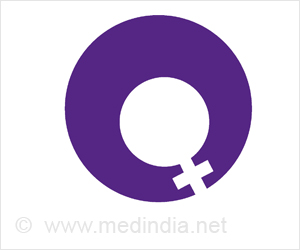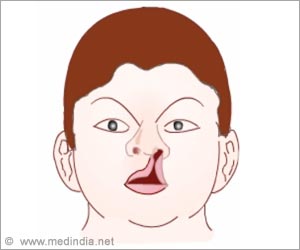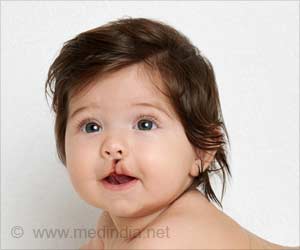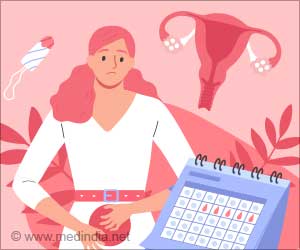Highlights:
- International Women’s Day is observed on the 8th of March to celebrate womanhood and emphasize the importance of gender equality.
- Dr Jyotsna Murthy, Professor of Plastic Surgery, SRMC, shares her journey with Smile Train in performing free surgeries for 12,000 children with cleft lip and palate in the past 17 years.

Dr Jyotsna Murthy spoke to Medindia about her journey with Smile Train of USA in treating children born with cleft lip and palate for free.
Q. Congratulations on this achievement. Could you share with our readers how your journey with Smile Train USA began?
Ans: During my college days, I always wanted to work with children, and it so happened when I started my training in plastic surgery, renowned plastic surgeon Dr Ravin Thatte, who was my professor, was also working among children with cleft lip and palate. He inspired me, and I followed his footsteps to work with children with cleft lip and palate. I went to France and the UK to be specially trained in cleft and craniofacial surgery. When I came back to India, I was looking for an academic institute that would allow me to do free work for those in need. It took me some time to figure out how to reach children with cleft lip and palate for surgery. In the early 90s, we were able to do about 30 to 50 cleft lip and palate surgeries a year. Even though the surgery was free, the patient had to buy some materials for the surgery that cost about Rs 900. Some patients were not able to afford the material cost, and they wouldn’t opt for the surgery.
In 1998, Dr Samuel Noordhoff encouraged me to present my work in the US with Smile Train, which supports the treatment of children with cleft lip and palate. When we signed an agreement with the Smile Train India, we were asked to complete 500 surgeries a year. It took me by surprise as we were finding it difficult to get even 50 patients for the surgery a year. That is when we started working with collectors, director of public health and Anganwadi workers in the rural areas to reach children with cleft lip and palate. In the first year with Smile Train, we were able to perform free surgeries for 790 children with cleft lip and palate. Then I realized there is so much need and we augmented facilities and expertise. Now, our center is the best in India for cleft lip and palate surgery.
Q: What is the global prevalence of cleft lip and palate? Does the prevalence differ among ethnic groups? What is the prevalence of clefts in India?
Q: What are the probable causes for this birth defect?
Q: At what age should children undergo surgery for cleft lip and palate? How long does it take for a child to be restored to normal after the surgery?
Ans: We usually wait for the babies to complete three or four months before performing the surgery because that is when the babies develop a strong immune system and they can withstand the procedure. The palate can be operated when the baby completes 7 or 10 months, the time when they start babbling. Basically, both cleft and palate surgeries should be operated before the child completes one year. Children recover very fast, and it usually takes 3 to 5 days or maximum a week for complete recovery.
Q: What precautions do the parents need to take after the surgery?
Ans: Like any other surgery, precautionary steps should be taken to avoid any infection at the surgery site. Parents should maintain a good hygiene while feeding the baby to avoid infection.
Q:What are some of the challenges you faced in this campaign to correct cleft lip and palate?
Ans: We did face a lot of challenges. The first challenge was to reach the patients as it was very difficult. To reach the patients, recently, we collaborated with Sarva Shiksha Abhiyan, an Indian Government program which is aimed at the universalization of elementary education. We worked with the district collectors and trained the teachers on identifying students with speech problems. We were surprised to see children between the ages of 7 to 12 years were referred to us with cleft palate.
The other challenge is that the parents do not realize the importance of treatment and some are even scared of their child undergoing the surgery. Though the treatment is free, and we also provide the travel allowance to reach the hospital, some parents do not bring their children for the treatment.
Q: Are there any recent advances in this field that you may want to share?
Ans: Cleft lip and palate surgery are simple, and it takes about one to three hours. Currently, there is no pathbreaking discovery in the treatment of cleft lip and palate. But, there are new techniques and gadgets that we use post-surgery for children with maxillary growth.
Q: Do you conduct speech therapy and counseling programs as part of the awareness campaign?
Ans: We do conduct speech therapy as a part of our treatment. The duration of speech therapy depends on the severity of speech impairment. During the therapy, we give some exercises for the child to practice at home and train the parent or the caregiver to supervise. We have collaborated with Transforming Faces Worldwide (TFW), Canada, which provides community-based services. We have initiated this community-based service in two districts - Thiruvannamalai and Cuddalore. Speech therapists and the department of orthodontics from our center visit these districts every 15 days to train local village health nurses and Anganwadi workers on training children with speech impairment. These workers visit the schools to give speech training to children and they record and send us the speech samples for us to supervise. Apart from speech therapy, we also provide counseling for children. When the children are brought to us for consultation, we observe the child and if required, we refer him/her to our child clinical psychologist in our team.
Source-Medindia













